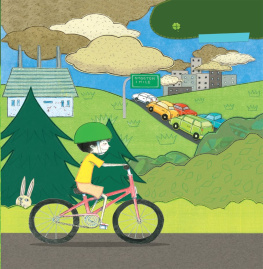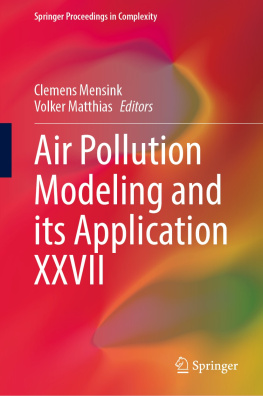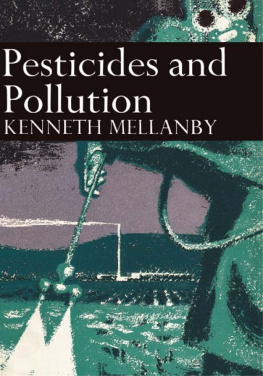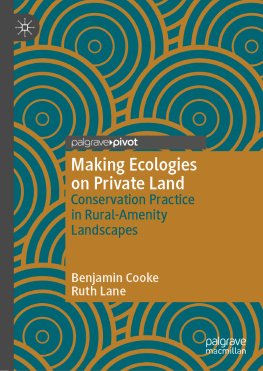
SECRETS OF POLLUTION AND CONSERVATION

ANDREW SOLWAY

E-book published in 2012 by Encyclopdia Britannica, Inc., in association with Arcturus Publishing Limited, 26/27 Bickels Yard, 151-153 Bermondsey Street, London SE1 3HA. Britannica, Encyclopdia Britannica, and the Thistle logo are registered trademarks of Encyclopdia Britannica, Inc.
ISBN 978-1-61535-634-8 (e-book)
This edition first published in 2011 in the United States of America
by MARSHALL CAVENDISH BENCHMARK
An imprint of Marshall Cavendish Corporation
Copyright 2010 Arcturus Publishing Limited
This publication represents the opinions and views of the author based on Andrew Solways personal experience, knowledge, and
research. The information in this book serves as a general guide only. The author and publisher have used their best efforts in
preparing this book and disclaim liability rising directly and indirectly from the use and application of this book.
All rights reserved. No part of this publication may be reproduced, stored in a retrieval system, or transmitted in any form or by any
means, electronic, mechanical, photocopying, recording or otherwise, without the prior written permission of the copyright owner.
Planned and produced by Discovery Books Ltd., 2 College Street, Ludlow, Shropshire, SY8 1AN www.discoverybooks.net
Managing editor: Paul Humphrey
Editor: Clare Hibbert
Designer: sprout.uk.com Limited
Illustrators: Stefan Chabluk, sprout.uk.com Limited (page 5)
Picture researcher: Tom Humphrey
Photo acknowledgments: Alamy: p 29 (Wildlife GmbH); Corbis: cover penguin (Martin Harvey/Gallo Images), pp 5 (Charles R. Knight/National Geographic Society), 8 (HO/Reuters), 11 (Keren Su), 12 (Chinch Gryniewicz/Ecoscene), 14 (Ted Horowitz), 19 (Pichi Chuang/Reuters), 21 (Toni Albir/epa), 22 (Gideon Mendel); Getty Images: pp 4 (Andrew Holt), 15 (Hong Jin-Hwan/AFP), 20 (David McNew), 23 (Cristina Quicler/AFP), 24 (Cameron Davidson), 26 (Ron Erwin), 27 (Loungepark); iStockphoto: p 10 (Anka Kaczmarzyk); Aldon Scott McLeod: cover background; NASA: p 7; Science Photo Library: p 25 (Jerry Mason); Shutterstock Images: cover and pp 1 tiger (neelsky), 6 (Eric Gevaert), 9 (Alexander Kataytsev), 13 (SergioZ), 16 (Tish 1), 28 (Kim Worrell).
No part of this publication may be reproduced, stored in a retrieval system or transmitted, in any form or by any means, electronic,
mechanical, photocopying, recording, or otherwise, without the prior permission of the copyright owner. Request for permission
should be addressed to the Publisher, Marshall Cavendish Corporation, 99 White Plains Road, Tarrytown, NY 10591.
Tel: (914) 332-8888, fax: (914) 332-1888.
Website: www.marshallcavendish.us
Other Marshall Cavendish Offices:
Marshall Cavendish International (Asia) Private Limited, 1 New Industrial Road, Singapore 536196 Marshall Cavendish International (Thailand) Co Ltd. 253 Asoke, 12th Flr, Sukhumvit 21 Road, Klongtoey Nua, Wattana, Bangkok 10110, Thailand Marshall Cavendish (Malaysia) Sdn Bhd, Times Subang, Lot 46, Subang Hi-Tech Industrial Park, Batu Tiga, 40000 Shah Alam, Selangor Darul Ehsan, Malaysia
Marshall Cavendish is a trademark of Times Publishing Limited
The website addresses (URLs) included in this book were valid at the time of going to press. However, because of the nature of the Internet, it is possible that some addresses may have changed, or the sites may have changed or closed down since publication. While the author, packager, and the publisher regret any inconvenience this may cause to the readers, no responsibility for any such changes can be accepted by the author, packager, or publisher.
Every attempt has been made to clear copyright. Should there be any inadvertent omission, please apply to the copyright holder
for rectification.
Library of Congress Cataloging-in-Publication Data
Solway, Andrew.
Secrets of pollution and conservation / Andrew Solway.
p. cm. -- (Science secrets)
Includes bibliographical references and index.
1. Pollution--Juvenile literature. 2. Conservation of natural
resources--Juvenile literature. I. Title.
TD176.S6423 2011
363.73--dc22
2010003943
1 3 6 5 4 2
Contents
How Have Humans Damaged the Planet?
People have been living on Earth for about 200,000 years. For most of that time, the world population was less than a million people. However about 10,000 years ago, the population began to grow.
The Industrial Revolution
By the 1800s, the world population was more than one billion. People in Europe and North America began to make steel and steam engines.
Steam engines helped build bridges, railways, and ships, but they also caused pollution. These machines released smoke and harmful gases into the air.

Trees being cut down in a rain forest in Sumatra. Felled forests take decades to recover.
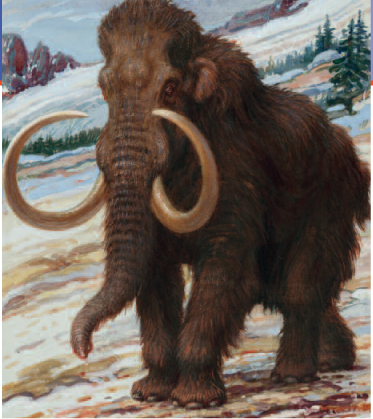
Mammoths disappeared about 10,000 years ago. The main cause was probably human hunting.
The Twentieth Century
The pollution of the air continued into the twentieth century as cars choked the roads and airplanes filled the skies. Meantime, by 1999, the human population topped six billion.

NOTHING NEW

Humans were causing damage to the environment well before the Industrial Revolution. Scientists think that hunting by humans as long as 45,000 years ago may have led to the extinction of mammoths, saber-toothed tigers, and other large animals.
What Next?
In this book, you will see how human activities are using up resources and damaging the earth. You will also discover what steps people are taking to restore the natural environment.
WORLD POPULATION GROWTH (BILLIONS OF PEOPLE)
The world population has taken thousands of years to reach three billion, but it has doubled to six billion in just forty years.

What Causes Air Pollution?
Burning fossil fuels is one of the main ways that we get energy. We burn fuel to heat our homes, to drive cars, and to produce electricity in power plants.
Producing Smoke
However, burning fossil fuel is the main source of air pollution around the world. It releases more smoke and gases into the air than any other human activity.
Next page



